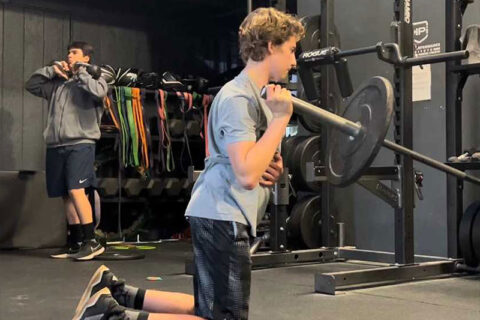The 4-Month vs. 4-Year Mindset
In the eternal debate on what is best for young players and their development, the equation often starts and ends with the proper mindset of everyone involved… player, parent, coaches, trainers, etc. A breakdown in one of those people and the entire progression of a young athlete can be compromised. When examining mindset in a more granular lens, it often comes down to a short versus long term frame of mind, and getting that wrong is what hurts most players in the most ways. A short-term mindset that prioritizes instant gratification, or even worse, current social status/perception, is the largest determinant that a young athlete faces in his or her development. This mindset usually is not contained in the athlete (young athletes want to get better and often adapt easily in new social situations), but in the parents that definitely want what is best for their children, but get caught in the trap of not valuing what is actually the best long term.
Here at KPI, we have a 4-year mindset with all of our age groups. We train youth players up through players in the professional ranks and a whole bunch of athletes in between and we stay away from the 4-month mindset… making quick fixes for instant gratification or lying to people to make them feel content in the short term when in turn we know the long term failure is coming. What is the difference between a 4-year and a 4-month mindset? Here are some key points…
4-Year Mindset
What is the next level the athlete is going to?
Youth athletes – Giving them the requisite skills to be prepared for the high school level and the fundamental movement patterns and strength that will allow them to be a better and healthier athlete
High school athletes – Building their big tools that colleges value the most in the recruiting process and shifting the health focus to preparing their body for the stress of a competitive schedule and larger demands on the body
College Athletes – Providing them a structured plan that will allow them to physically compete at the highest amateur level and giving them resources in the offseason to partner with their colleagues in developing them physically for the professional level.
Professional Athletes – Working with them in the offseason on improving their strength and highly specific skill needs. This entails us understanding the unique physical and mental demands they have as a pro athlete and building a system they can thrive in and reach the highest level of their sport.
4-Month Mindset
What makes the athlete and family the most comfortable now?
Youth Athletes – Searching for the team that wins the most tournaments and valuing the social opinion of others instead of just doing what is best for the development of a young athlete. This mindset often presents itself as hopping from team to team with no structure or staying with a team so the family’s friends don’t get upset they leave.
High School Athletes – Being upset a player isn’t getting playing time and that the reason is “politics.” Or being scared of a high school coach and not doing what is best for the player because of it. This is the time a lot of parents start to realize they lost some of the key developmental time during the youth years because of a short-term mindset. They often get caught in a trap with no real solution.
College Athletes – Not wanting to fight through a tough situation and instead of trying to leave a school right away because the athlete did not get playing time out of the gate. This inability to persevere at the highest amateur level often leads to an athlete trying to find the perfect situation, which does not exist.
Professional Athletes – Not as common at this level because these athletes are already at the absolute peak of their sport and have little control over their ultimate destiny. Most athletes at this level are very focused on what is best for their development.
When looking at the situation through this perspective the answer is very apparent… having a long-term mindset is without a doubt the best for a young athlete’s development. But the issue is that most families won’t make the right decision for their athlete’s long-term development due to the reasons listed above. Now that we have trained thousands of athletes in our system, we can say with very clear and objective determination… those athletes that invest themselves in a developmental system that values the right things receive the most gains and success as they grow as players. Those that get caught in the 4-month mindset are often searching aimlessly for answers when the competitive level gets too difficult for them to manage. Unfortunately at that point in time, it can often be too late. We will continue to work to educate our local community on how to prioritize development over all else and the value of a truly integrated approach to athletic development.


